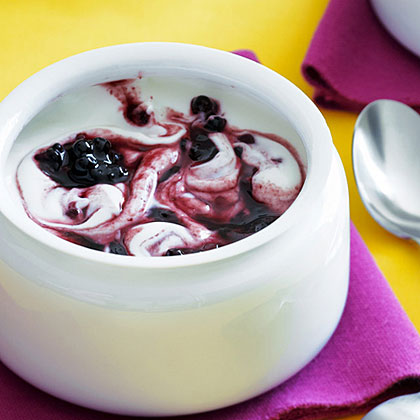
Because fresh homemade yogurt--unlike commercially produced yogurt--has no gelatin, it has a soft, loose texture; if you want it to be firmer, you can boil the milk for 10 to 15 minutes before cooling it, to evaporate some of the water. (The yogurt will have a slightly "cooked" taste, though.) Or you can drain it in a cheesecloth-lined colander, set over a bowl in the fridge, until it's as thick as you like. If you'd like it to be tangier, just let it develop for a few more hours in its warm environment before chilling.

Pour milk into a large, heavy pot and bring to a boil over medium-high heat, stirring often. When milk foams up, pour into a bowl and put bowl in a sink of cold water. Cool milk to 110°.
Whisk 1/4 cup 110° milk with yogurt in a bowl, then whisk into milk. Pour into 2 large glass jars, cover, wrap jars in towels, and put in a cooler. Add a few more jars filled with hot water to cooler to keep milk warm, and cover cooler. Let milk sit 8 to 12 hours to set (it will look and taste like yogurt when it's done). The longer it sits, the tangier it gets; chilling stops the process. Yogurt keeps, chilled, up to 1 week.
Servings 0
* Percent Daily Values are based on a 2,000 calorie diet. Your daily value may be higher or lower depending on your calorie needs.